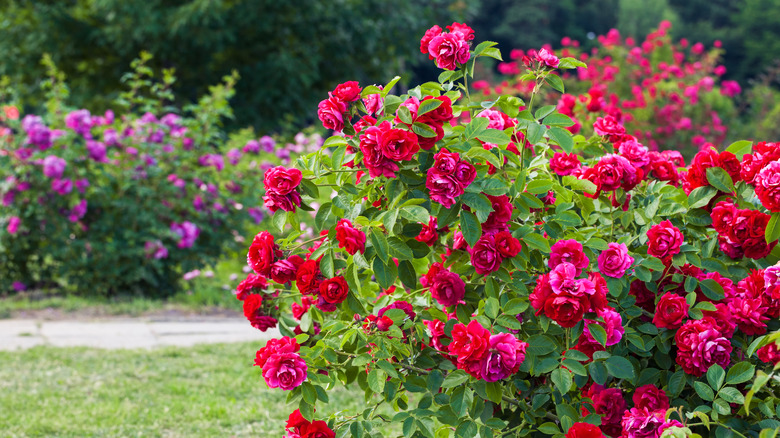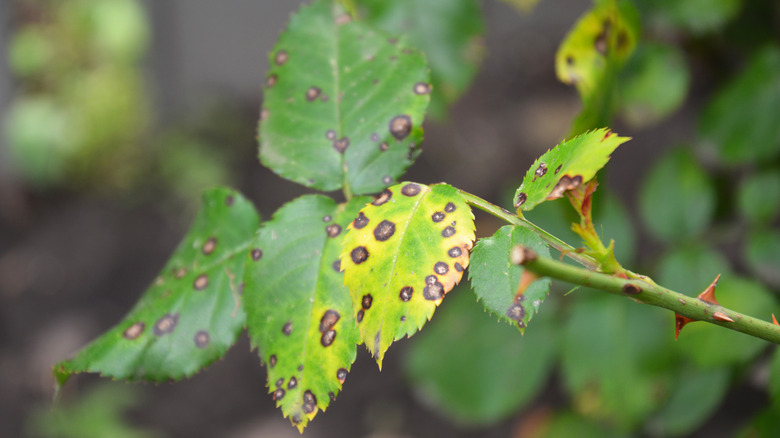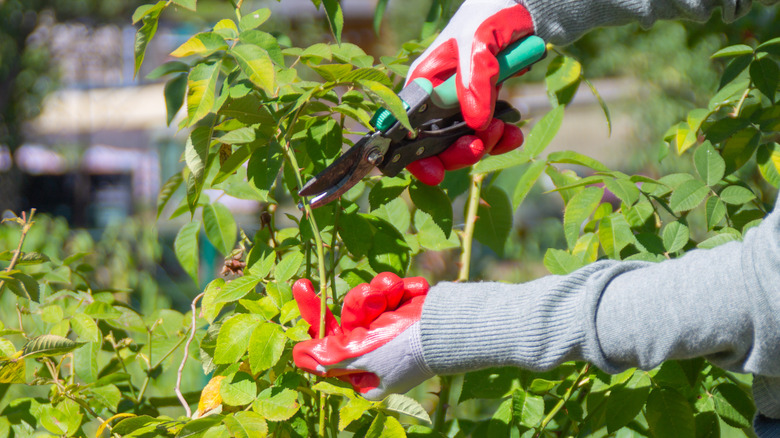Plant Rescue: What Black Spot On Roses Looks Like And How To Save Them
Rose bushes bloom with gorgeous flowers in a variety of colors. Once you plant them in the proper environment, they're easy to care for and will reward you with their large blossoms that you can harvest. However, while you may do everything right, there is always a risk of your plants getting a disease or a bug infestation. These can be hard to cure or even kill your plant, so take every precaution you can.
Roses need at least six hours of sunlight a day; any less and they won't be able to produce flowers. The best light for them is bright morning sun because it will dry any moisture off their leaves, according to Clemson Cooperative Extension. You should also plant roses in sandy soil that drains well while retaining moisture. Depending on how dry your air is, you may need to water them as frequently as twice a week. When you do so, ensure that it is enough to reach even the deep roots. If you frequently water only the top surface of your plant, you are putting it at risk of getting a fungal disease.
Signs of black spot
Do the leaves on your rose bush have black spots on them? Are they turning yellow and dropping? If so, your plant may have one of the most common fungal diseases for rose bushes; it's called diplocarpon rosae and can weaken your plant, causing it to die if you leave it untreated.
Specifically, a rose bush infected with this fungus will develop dark purple or black spots on its leaves and black lesions on its tender stems, according to RHS. The fungus will start at the bottom of the plant, taking over the whole thing until all the leaves have dropped and died. Sometimes new foliage doesn't fall off the plant, but it will grow smaller than it usually would when it's healthy. Additionally, your rose bush can live with this disease for a while, though once winter begins even the smallest frost can kill it.
How to protect your roses
Rescuing your rose bush from diplocarpon rosae can be tricky. First, you will want to remove any diseased leaves as soon as you see them. Missouri Botanical Garden recommends collecting any foliage that has fallen and destroying it. Don't add anything from your rose bush to your compost pile (if you have one) that you usually toss clippings into. Why? The fungus can survive and infect other plants even after the scraps have turned into usable compost.
It's also important to keep your rose bush dry to prevent the fungus from growing in the first place. Once infected, using a fungicide will help you to control the disease. You won't be able to cure the infected parts of your plant, but it will keep the new growth healthy. To use fungicide effectively, you need to be consistent and apply it every seven to 14 days and after it rains. Some pesticides you can use to treat black spot are copper, sulfur, captan, and chlorothalonil.


